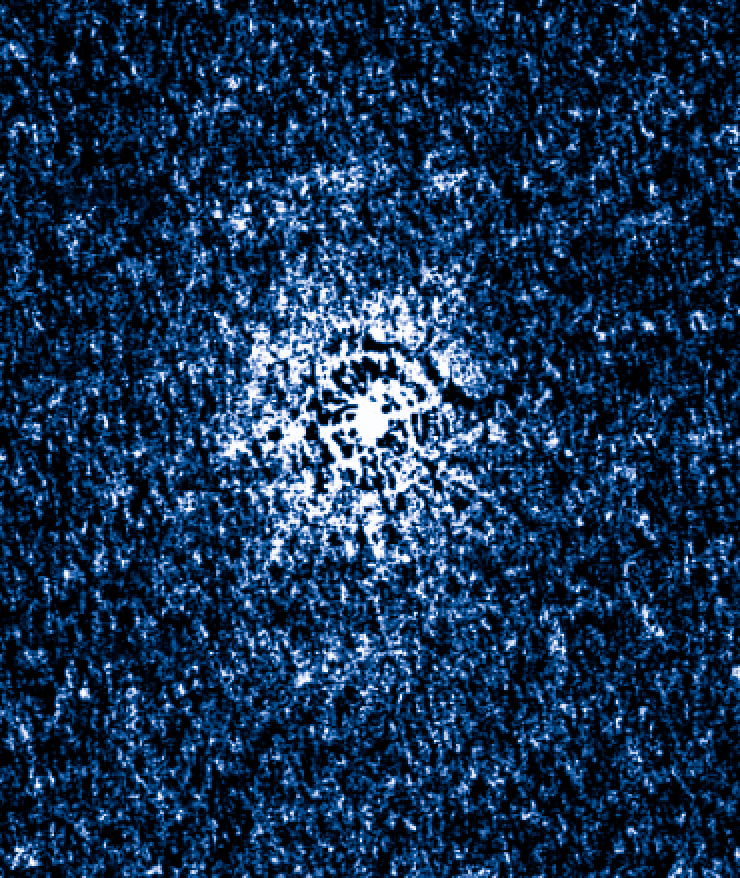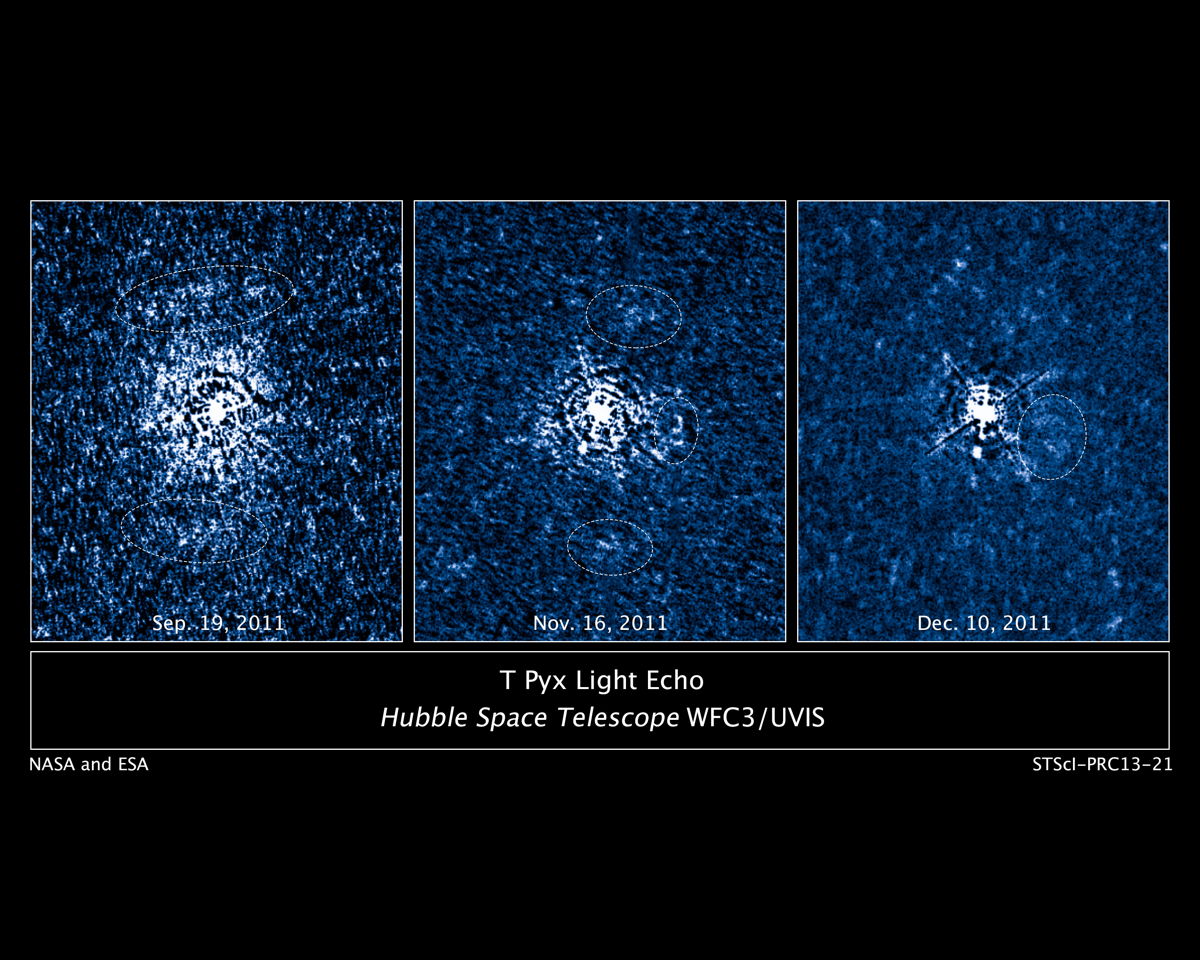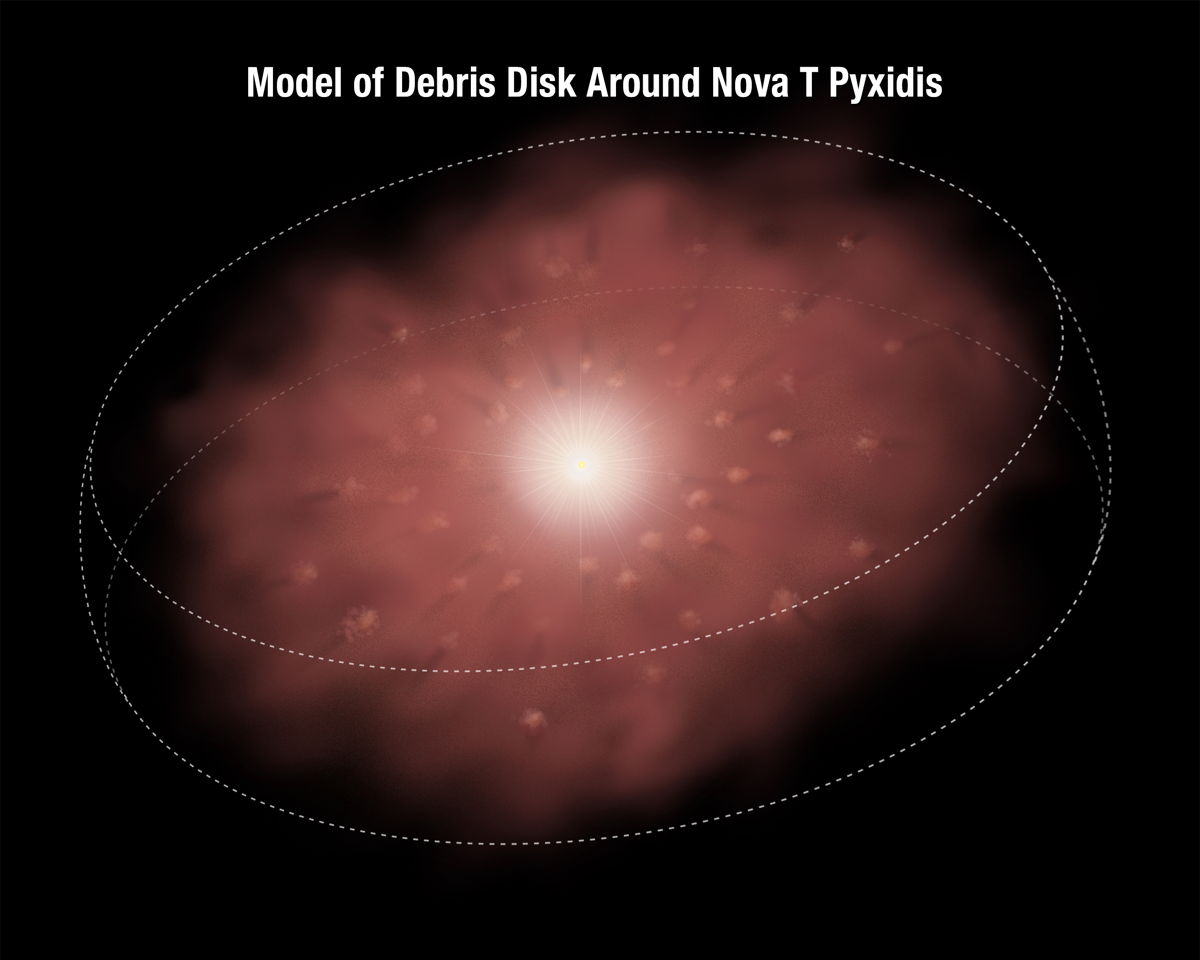
NASA's Hubble Space Telescope has given astronomers a rare look at an enormous stellar eruption, allowing them to map out the aftermath of such blasts in unprecedented detail.
Hubble photographed an April 2011 explosion in the double-star system T Pyxidis (T Pyx for short), which goes off every 12 to 50 years. The new images reveal that material ejected by previous T Pyx outbursts did not escape into space, instead sticking around to form a debris disk about 1 light-year wide around the system.
This information came as a surprise to the research team. [Most Amazing Hubble Discoveries]
"We fully expected this to be a spherical shell," study co-author Arlin Crotts of Columbia University said in a statement. "This observation shows it is a disk, and it is populated with fast-moving ejecta from previous outbursts."

The erupting T Pyx star is a white dwarf, the burned-out core of a star much like our own sun. White dwarfs are small but incredibly dense, often packing the mass of the sun into a volume the size of Earth.

T Pyx's white dwarf has a companion star, from which it siphons off hydrogen fuel. When enough of this hydrogen builds up on the white dwarf's surface, it detonates like a gigantic hydrogen bomb, increasing the white dwarf's brightness by a factor of 10,000 over a single day or so.
This happens again and again. T Pyx is known to have erupted in 1890, 1902, 1920, 1944, and 1966, in addition to the 2011 event.
Breaking space news, the latest updates on rocket launches, skywatching events and more!
Such recurrent outbursts are known as nova explosions. (Nova is Latin for "new," referring to how suddenly novas appear in the sky.) Novas are distinct from supernovas, even more dramatic blasts that involve the destruction of an entire star.
The new study clarifies just what happens to the material ejected by such outbursts.
"We've all seen how light from fireworks shells during the grand finale will light up the smoke and soot from shells earlier in the show," co-author Stephen Lawrence of Hofstra University said in a statement. "In an analogous way, we're using light from T Pyx's latest outburst and its propagation at the speed of light to dissect its fireworks displays from decades past."
The study represents the first time the area around an erupting star has been mapped in three dimensions, researchers said.
The new Hubble Space Telescope observations also help refine the distance to T Pyx, pegging it at 15,600 light-years from Earth. (Past estimates have ranged between 6,500 and 16,000 light-years.)
The team presented its results today (June 4) at the 222nd meeting of the American Astronomical Society in Indianapolis. The study will also be published in the June 20 issue of the Astrophysical Journal Letters.
Follow Mike Wall on Twitter @michaeldwall and Google+. Follow us @Spacedotcom, Facebook or Google+. Originally published on SPACE.com.
Join our Space Forums to keep talking space on the latest missions, night sky and more! And if you have a news tip, correction or comment, let us know at: community@space.com.

Michael Wall is a Senior Space Writer with Space.com and joined the team in 2010. He primarily covers exoplanets, spaceflight and military space, but has been known to dabble in the space art beat. His book about the search for alien life, "Out There," was published on Nov. 13, 2018. Before becoming a science writer, Michael worked as a herpetologist and wildlife biologist. He has a Ph.D. in evolutionary biology from the University of Sydney, Australia, a bachelor's degree from the University of Arizona, and a graduate certificate in science writing from the University of California, Santa Cruz. To find out what his latest project is, you can follow Michael on Twitter.
